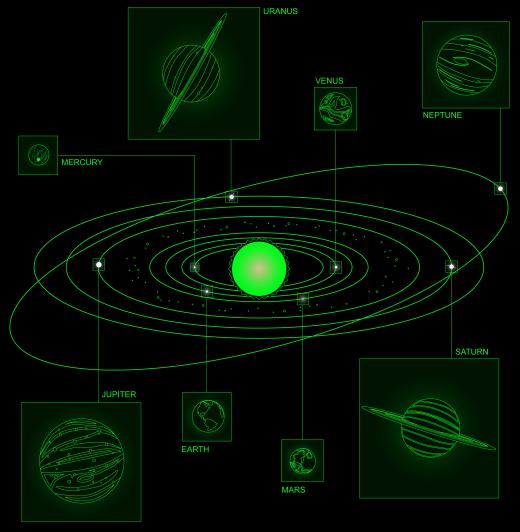What is a Dyson Sphere?
 Michael Anissimov
Michael Anissimov
The Dyson sphere is a hypothetical structure of immense size. It is a sphere that completely (or almost completely) encloses a star, making use of all the energy radiated away by the fusion reactions taking place in its core. The idea of a Dyson sphere was first formalized and popularized by renowned physicist Freeman Dyson in an 1959 article in Science entitled "Search for Artificial Stellar Sources of Infra-Red Radiation," though he originally got the idea from a 1945 science fiction novel by Olaf Stapledon entitled Star Maker.
Our sun has an energy output of around 4 x 10^26 watts, or approximately 100 million times humanity's total energy consumption throughout the past century every second. If this energy could be harnessed via a Dyson sphere, we would have enough power to sustain a population trillions of times our current population for many eons.

The original proposal for a Dyson sphere was not for a solid sphere, but a collection of ~10^5 objects which collectively absorb the bulk of the star's solar energy. Sometimes called a "Dyson swarm," this would allow the incremental construction of the system, with subcomponents orbiting the star independently. From the outside, such a swarm would appear black, emitting only infrared radiation. Some of our orbiting infrared telescopes have been searching for such bodies as Dyson spheres or swarms for decades, with no luck. If reflectors were used on the interior of the objects, the radiant energy might be directed only one way, making it hard to detect from a distance.

Preliminary calculations have shown that our solar system contains enough rigid matter to construct a Dyson swarm, but probably not a rigid Dyson sphere, which would have to be about a million km (600,000 miles) thick to be stable. A good candidate building material would be buckminsterfullerene, an allotrope of carbon with immense strength.
The Dyson sphere is often mentioned in conjunction with the Kardashev classification scheme, a method used to classify hypothetical civilizations by way of their energy sources. According to this classification scheme, a Type I civilization would be one which utilizes the power sources of an entire planet, a Type II civilization would be one that uses an entire star's output for power, and a Type III civilization would be that which uses an entire galaxy for power. A more speculative Type IV civilization would be one which harnesses the power of an entire universe. The construction of a Dyson sphere would place a civilization squarely in the Type II category.
AS FEATURED ON:
AS FEATURED ON:












Discussion Comments
@robbie21 - I think I remember the episode you're talking about. Science fiction always seems to use the idea of a Dyson shell as a rigid, solid structure, which is really a misinterpretation of the idea. (I think I read a short story once where people realized they were living on the outside of a Dyson sphere. They said it was impossible that they could ever have lived on the inside, because inside, gravity would be so high that chickens wouldn't even be able to fly!)
The Wikipedia article on Dyson spheres has some good pictures of what the arrangement might actually look like. You raise a good question, though, whether it would even be right. It brings to mind extreme engineering projects on Earth today (like dams), which so often seem to have unintended consequences.
Fascinating! I clicked on the article because I thought I had heard of a Dyson sphere from a Star Trek TNG episode where they found a partially completed but abandoned Dyson sphere. It just boggles the mind to think how much territory that would create. Also to realize that it would mean, I assume, basically dismantling all the planets and whatnot in our solar system. Considering that, would it be just plain wrong to build a Dyson sphere? Would it be destroying the "ecosystem," if you will, of the solar system and the galaxy?
Post your comments